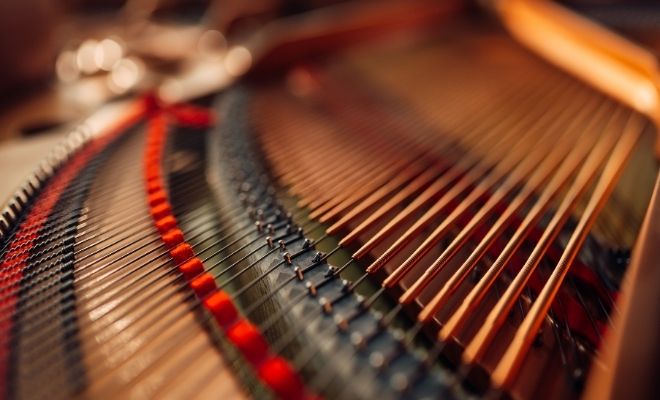
Arts
Strings and Hammers: How Pianos Work
Some of the most awe-inspiring musical scores task the piano with carrying the melody. Beethoven’s contemplative Moonlight Sonata and Debussy’s rich Clair de Lune are just two such examples of thousands. The piano has the range to hit every kind of tone on the spectrum, and it has its unique constitution to thank for that. If you want to understand how pianos work, we’ll walk you through the parts that make its beautiful music ring.
Keys
First, the keys, or the ivory that players contact when playing. Each key connects with a hammer, and there are 88 in all—52 white and 36 black. Today’s keys are no longer actually ivory due to restrictions on elephant hunting, though they retain this old nickname. Instead, most are wooden with an overlaying of plastic.
Hammers
Beneath the piano’s surface are hammers that increase in size as the notes become lower. When you press a key, it’s the hammer that physically strikes the strings and creates that unmistakable piano sound. Sometimes, when hammers make a harsh sound upon striking the strings, technicians can “voice” them by loosening the fibers on the hammer surface.
Strings
Next up are the all-important strings. Some people are surprised to learn pianos are stringed instruments—they sound entirely different from a guitar, after all. Piano strings are heavy-duty, made of heavy and taut steel wire, increasing in diameter and length for lower bass notes. To tune your piano, you must adjust the string’s tuning pin, but don’t do so without understanding the process first.
Dampers
Think of a damper as a hammer’s equal-and-opposite counterpart. A hammer’s purpose is to make noise, whereas a string’s damper mutes any vibration. When you press a key, the damper releases from the string and permits sound to emit. When you let go of the string, the damper falls back into place atop the string, stopping those tones so you can move on to others.
Pedals
Another key element of how pianos work is the three pedals. While the leftmost soft pedal shifts your hammers slightly to one side so they strike fewer strings, the other two pertain to your dampers. The middle sostenuto pedal removes the dampening from the strings you’re playing at the time, even after the release of these keys. And the last pedal, the sustaining pedal, removes dampening for all strings.
Soundboard
The final important component to understand, among many, is the soundboard. While the strings are the heart of the piano’s sound, the instrument wouldn’t be enjoyable if audience members couldn’t hear them. The soundboard amplifies a piano’s gorgeous sound by reverberating when the strings do.





0 comments